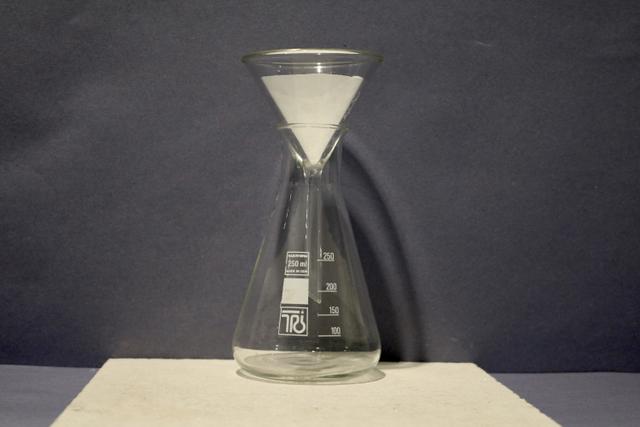Myths about teaching can hold you back
- Year 7
Separating an insoluble solid from a liquid
I can use my understanding of the properties of solids and liquids to work out how to separate some mixtures.
- Year 7
Separating an insoluble solid from a liquid
I can use my understanding of the properties of solids and liquids to work out how to separate some mixtures.
These resources were made for remote use during the pandemic, not classroom teaching.
Switch to our new teaching resources now - designed by teachers and leading subject experts, and tested in classrooms.
Lesson details
Key learning points
- Magnets attract iron and steel
- Insoluble solids can be separated from a liquid using a filter by a process known as filtration.
- Filter paper is folded to make a pocket that fits in a filter funnel for filtering fine particles
- A drop of water on a filter funnel helps keep the filter paper cone open for easy filtering
Keywords
Filtration - The process of separating an insoluble substance from a liquid using a filter.
Filter paper - Paper with tiny holes, placed inside the filter funnel to separate an insoluble solid from a liquid.
Filter funnel - A cone-shaped tool with a tube, placed in the top of a conical flask during filtration.
Residue - The insoluble solid that remains in the filter paper.
Filtrate - The liquid that passes through the filter paper, separating from the insoluble solid.
Common misconception
A funnel is the same as a filter. Dissolved substances will be collected in the filter paper.
A filter separates materials. Dissolved substances are smaller than the pores in the filter paper and so will pass through with the liquid.
To help you plan your year 7 science lesson on: Separating an insoluble solid from a liquid, download all teaching resources for free and adapt to suit your pupils' needs...
To help you plan your year 7 science lesson on: Separating an insoluble solid from a liquid, download all teaching resources for free and adapt to suit your pupils' needs.
The starter quiz will activate and check your pupils' prior knowledge, with versions available both with and without answers in PDF format.
We use learning cycles to break down learning into key concepts or ideas linked to the learning outcome. Each learning cycle features explanations with checks for understanding and practice tasks with feedback. All of this is found in our slide decks, ready for you to download and edit. The practice tasks are also available as printable worksheets and some lessons have additional materials with extra material you might need for teaching the lesson.
The assessment exit quiz will test your pupils' understanding of the key learning points.
Our video is a tool for planning, showing how other teachers might teach the lesson, offering helpful tips, modelled explanations and inspiration for your own delivery in the classroom. Plus, you can set it as homework or revision for pupils and keep their learning on track by sharing an online pupil version of this lesson.
Explore more key stage 3 science lessons from the Separation techniques unit, dive into the full secondary science curriculum, or learn more about lesson planning.

Equipment
See additional materials.
Content guidance
- Risk assessment required - equipment
Supervision
Adult supervision required
Licence
Prior knowledge starter quiz
6 Questions
Q1.Which substances are insoluble (do not dissolve) in water?
Q2.A is a material that contains two or more different substances, which can be physically separated.
Q3.What mixture is formed when a substance dissolves in a liquid?
Q4.Match the following words to their meaning.
A substance which can dissolve in a liquid.
To divide something into its different parts.
A substance which cannot dissolve in a liquid.
Items needed to perform a task.
Q5.Iron is a material as it is attracted to magnets.
Q6.Which of the following are mixtures?
Assessment exit quiz
6 Questions
Q1.Some insoluble solids are more than a liquid and this property causes them to sink.
Q2.What is the name of the two separation techniques that involve mixtures being poured?
Q3.Match the words with their definitions.
The insoluble solid collected in the filter paper.
The liquid separated from the insoluble solid.
To physically divide different parts of a mixture.
Unable to dissolve in a liquid.
Q4.Order the followings steps to show how to set up the equipment to perform the filtration of an insoluble solid in a liquid.
Q5.Filtration is used when making a cup of tea from a teabag. Match up the scientific word to the part involved in making the cup of tea.
the teabag
the tea drink
the tea leaves
holes in the teabag
Q6.Look at the image of filtering equipment. Choose the problems that could occur when filtering.



